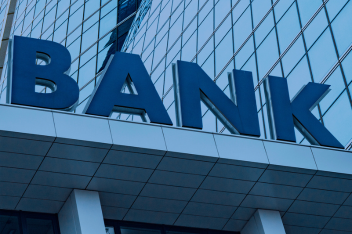Welcome to the July 2021 Investment Update for the Switzer Dividend Growth Fund (SWTZ or the Fund). Click here to download the report.
Performance Summary
The portfolio delivered a positive return of 2.34% over the month of August, compared with the S&P/ASX 200 Accumulation Index return of 2.50%.
Over the past 12 months, SWTZ has paid a distribution yield of 2.59%, or 3.64% including franking credits. Distribution yield is calculated as the distributions received over the 12 months to 31 August 2021 relative to the price at the beginning of the period.
Given its focus on income and capital preservation, over the long term, we expect SWTZ to marginally underperform in rising markets and marginally outperform in falling markets.
Market Commentary
August saw a positive result for global markets as the S&P500 and the ASX200 rose 3.0% and 2.5% respectively. The US 10-year bond yield fell 21 bps to 1.23%, on the back of dovish commentary from the Fed, while Australian 10-year bond yields were flat. The Australian market also completed its August reporting season. Dividends continued to beat estimates as payout ratios normalised, and yield credentials are rebuilt. Buy-back activity has generally been well received with a large-cap bias to announced activity.
Australian GDP rose +0.7% quarter-on-quarter (QOQ) in Q2 2021 and 9.6% higher over the year. The survey captured Melbourne’s two week ‘snap’ lockdown in early June but largely predated the ongoing lockdowns in NSW and Victoria. The virus outbreaks and extended lockdowns in NSW and Victoria are likely to result in a contraction in GDP in Q3 2021.
Household consumption rose +1.2% QOQ, with broad-based strength across goods (+0.9% QOQ) and services (+1.3% QOQ). In level terms, household consumption has now returned to just 0.3% below pre-COVID-19 levels.
Australia’s Purchasing Managers Index (PMI) eased by 9.2pts to 51.6pts in August, the second consecutive monthly decline driven by softer production and employment amid tighter lockdown restrictions in NSW and Victoria.
Australian dwelling prices (8-city average) rose another 1.5% month-on-month (MOM) in August, with the annual rate picking up to 17.5% year-on-year. Price gains were broad-based across major capital cities including in Sydney (1.8%) and Melbourne (1.1%) despite the lockdowns. Growth in detached houses (1.6% MOM) continued to outpace growth in units (1.1% MOM). Housing market activity remains well above average levels with the estimated number of home sales dropping by 9% nationally over the three months ending August compared with the immediately preceding 3-month period.
Australia’s economic recovery is expected to accelerate through H1 2022 as high vaccination rates allow for a more comprehensive re-opening of the economy, alongside a large pool of savings in the private sector and supportive fiscal/monetary policy.
Portfolio Commentary
The August reporting season delivered impressive earnings and dividend growth of ~30% for the ASX 200. The uplift in earnings was led by the Resources (iron ore producers) and the Banks. The major Resource companies, bolstered by elevated commodity prices, generated strong free cash flow that delivered material upgrades in dividends. Disciplined capital allocation has also supported mining sector balance sheets, which are now in pristine shape.

A buoyant housing market supported a return to credit growth for the banks. This, coupled with “unquestionably strong” balance sheets, enabled the banks to announce $10bn of buy-backs. The banks’ reporting season also confirmed a more benign environment for net interest margins (NIM) despite the pressure of record low interest rates and rising competition.
Overall, the strong upgrade cycle in earnings supported large capital management initiatives, with at least $18bn of buy-backs and capital returns announced, including special dividends. Further buy-backs are expected to be announced by the banks and diversified industrial companies over FY2022.
Nevertheless, the expectation for a robust earnings season had been well anticipated by the market as results broadly met analysts’ forecasts. Significantly, the reporting season was more revealing about the headwinds emerging for companies in FY2022, suggesting that earnings momentum had now peaked, with net earnings revisions turning negative in August.
Trading updates for the first eight weeks for FY2022 highlighted the negative impact that prolonged lockdowns on the eastern seaboard were having on company revenues. Several companies indicated they were experiencing revenue declines of >10% in the new financial year. Some additional companies did not provide guidance, citing heightened uncertainty caused by the persistence of the Delta variant of the COVID-19 virus.
Portfolio Outlook
The growing headwinds of extended lockdowns and continued supply chain constraints remain a clear negative for earnings visibility in FY2022. Earnings expectations are likely to moderate with the Delta variant further weighing on economic activity and disrupting supply chains. A critical milestone for government restrictions to ease is for the eligible Australian population to reach vaccination rates of 70%-80% in the coming months. With government restrictions set to ease as the vaccination rates reach 70%+ in Australia, reopening is a vital part in the restoration of the economy.
The level of heightened uncertainty posed by the pandemic has further underlined the importance of owning stocks that are industry leaders in the defensive sectors of Consumer and Industrial staples, and Healthcare sectors. We firmly believe that earnings resilience, industry leadership and strong balance sheets remain valuable attributes of the portfolio in delivering high quality earnings and dividends to our investors. While earnings momentum is likely to slow in the coming quarter, earnings growth is still expected to be in the vicinity of ~10% in FY 2022, supported by accommodative policy settings and the expectation that improved vaccine availability and higher vaccination rates will ultimately lead to profit momentum returning.
Investment Objective
The Switzer Dividend Growth Fund is an income-focused exchange-traded managed fund with a mix of yield and quality companies. The objective of the Fund is to generate an above-market yield while maximising franking where possible and deliver capital growth over the long term. We select companies that, in aggregate, generate sustainable dividend income. The Fund is characterised by a strong and diverse portfolio of companies that exhibit good cash flows and strong business models.
DISCLAIMER: AGP Investment Management Limited (AGP IM) (ABN 26 123 611 978, AFSL 312247) is a wholly owned subsidiary of Associate Global Partners Limited (AGP) (ABN 56 080 277 998), a financial institution listed on the ASX (APL). AGP IM is the Responsible Entity and Vertium Asset Management Pty Ltd is the investment manager of Switzer Dividend Growth Fund (Quoted Managed Fund) (ARSN 614 066 849) (the Fund).
This material has been prepared for general information only. It does not contain investment recommendations nor provide investment advice. It does not take into account the objectives, financial situation or needs of any particular individual. Investors must, before acting on this material, consider the appropriateness of the material.
Any references to ‘We’, ‘Our’, ‘Us’, or the ‘Team’ used in the context of the portfolio commentary, is in reference to Vertium Asset Management Pty Ltd, as investment manager for the Fund.
Neither AGP IM, AGP, their related bodies corporate, entities, directors or officers guarantees the performance of, or the timing or amount of repayment of capital or income invested in the Fund or that the Fund will achieve its investment objectives. Past performance is not indicative of future performance.
Any economic or market forecasts are not guaranteed. Any references to particular securities or sectors are for illustrative purposes only and are as at the date of publication of this material. This is not a recommendation in relation to any named securities or sectors and no warranty or guarantee is provided that the positions will remain within the portfolio of the Fund.
Investors should seek professional investment, financial or other advice to assist the investor determine the individual tolerance to risk and needs to attain a particular return on investment. In no way should the investor rely on information contained in this material.
Investors should read the Fund’s Product Disclosure Statement (PDS) and consider any relevant offer document in full before making a decision to invest in the Fund. The Fund’s Target Market Determination and other relevant information can be obtained by visiting www.associateglobal.com.









